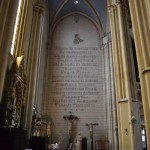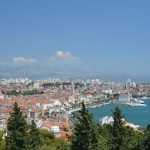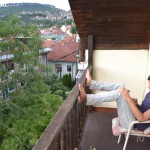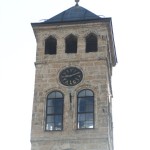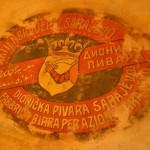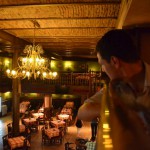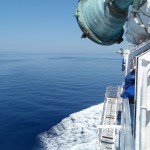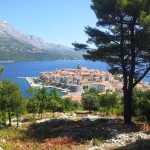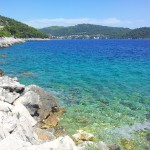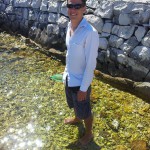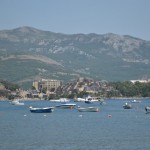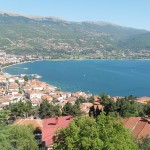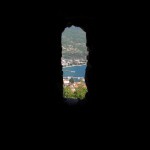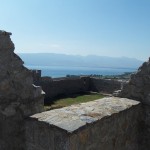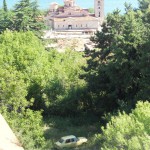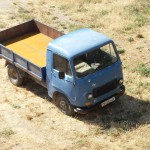While I haven’t covered everything from P3 yet in blog posts, I want to give at least an update on my current travels before it takes me another few weeks until I can find some time to blog again… P3 ended on 28 June, and after exams I flew to France first since I am going to spend P4 after the summer break there, and I wanted to drop some of my luggage there so that I don’t have to travel with all my stuff over the whole summer.
My summer trip then started in the Western Balkans (i.e., former Yugoslavia). The first place I visited was Zagreb, which proved to be a much nicer city than I had imagined. The location at a cultural crossroads are quite visible in Zagreb, with local food with influences from Hungary (in fiery Gulash soups), Turkey (in Kebabs and other grilled meat) and Italy (in pasta and seafood dishes). Zagreb has a really nice, hilly old town with some nice churches and old buildings.
From Zagreb, I moved to Zadar on the Adriatic coast. Zadar is touristy, but not one of the main tourist drags. It has a quite charming old town and some unusual attractions such as a “sea organ”, which powered by the movement of the waves creates sounds using pipes in the pavement of the promenade along the coast. Also, I used the chance to go for my first swim in the Adriatic for the summer.
The next stop was Split, which is one of the really touristy spots along the Croatian coast. However, the city is really charming even with lots of tourists. The old town is centered around and in the former palace of Roman emperor Diocletian, which is spectacularly located along the coast behind Split’s harbor. Not much of the original palace remains to this day, but what especially in the middle ages the inhabitants of the city built inside the walls of the palace is a dazzling array of little alleyways, with cafés and restaurants at every corner, and it is real fun to just get lost in the maze for a while and discover ever new places.
From Split, I took a brief 2-day detour to Bosnia-Herzegovina, namely to Sarajevo. While it took a good eight hours bus ride to get there and back, it was certainly worth it. Not only is the city beautifully located within a valley and surrounded by forest-clad mountains, but also is the changeful history of the city very visible everywhere. From the old Turkish quarter, which seamlessly gives way to late 18th-century Austrian architecture, to the bridge where the assassination of Austrian prince Franz Ferdinand triggered the first World War, the city is rich in evidence to its importance as a multicultural center at the boundary of Europe and the East. The more recent history, namely the 1992-1995 siege of Sarajevo by Serbian forces, is even more present: Many houses are riddled by bullet holes, and in some places you can still see the so-called “Sarajevo Roses” – places where artillery shells hit the pavement, killing people and leaving a whole in the ground have been filled with red-colored concrete. Another stunning experience was visiting the Tunnel Museum, which shows how the Bosnians transported supplies and weapons into the city under siege through an 800m tunnel below the airport, which was controlled by UN troops and thus neutral in the conflict. Today’s Sarajevo is again a friendly and rather multicultural place, even though some of the atrocities of the recent past can of course not be easily forgotten and thus some distance is still present between the different ethnic groups.
After Sarajevo, the next stop back in Croatia was Dubrovnik, which is the second major tourist city on the coast. Even though its old town, which is surrounded by impressive city walls (which are accessible by foot) is certainly beautiful, the amount of tourists, especially large tour groups from cruise ships, make walking through the city rather painful. The city is definitely a must-visit in the area, but should (in my opinion) also be left again as quickly as possible.
The next destination, however, was really one of the highlights of the trip so far: Korcula island off the Croatian Adriatic coast between Split and Dubrovnik was really wonderful. Korcula has a nice little old town, which with its city fortifications and narrow steep streets is a bit like a mini Dubrovnik, but much sleepier. There are certainly some tourists there, but the whole atmosphere is much more relaxed. Also, because the island is a good 50 kilometers long, the visitors spread out much more and it feels less busy. The scenery on Korcula is amazing: The island is forested and extremely hilly (the highest hills are more than 500m high), and the surrounding Adriatic sea is amazingly clear, blue to green and generated lots of moments of pure astonishement. The island is too big and hilly (and the weather was too hot) to go to all interesting places by bike, but a rented scooter did the job instead and it was certainly fun to ride it around the island, jump into the amazing water from small jetties and pebbly beaches where no one else was anywhere near…
The next stop (after another night in Dubrovnik) was Kotor in Montenegro. Kotor is located at a quite beautiful bay of the Adriatic, but after having seen the waters around Korcula, the bay unfortunately couldn’t impress me that much anymore. Kotor’s old town is a really nice place, and while it is a bit smaller than the ones of Split and Dubrovnik, it has certainly a similar appeal. Most impressive about Kotor are the fortifications (walls and towers) which climb up the steep mountain behind the old town. You can climb them (1400 steps over 1200m), but given that it was constantly around 35°C, I did not dare to undertake that. An interesting excursion from Kotor took me to Budva on the Adriatic coast – which seems to be a focal point mainly for rich Russians who either park their yacht in the marina or flock into the huge hotel blocks and on the pebbly beaches… certainly an interesting sight, but surely not my kind of vacation.
The last stop in former Yugoslavia and also one of the nicest ones was Ohrid in Macedonia, which took a long and cumbersome overnight bus journey with two border crossings (one into Kosovo and one into Macedonia) to get to. Ohrid is both the name of a town and the lake, which is located at 700m above sea level and therefore was refreshingly cooler than the coast (still around 30°C though). The lake is really beautiful, surrounded by mountains, and also the town itself, with a fortress overlooking the old town. A very nice day trip took me on a boat cruise across the lake to the monastery of St. Naum, which is really pleasently located at the lakeside. In addition to all the scenic beauty, however, Macedonia was definitely one of the highlights because of the friendliness and hospitality of the people. Not only the guest house owner, but also many people I encountered, went out of their ways to help, which really made a difference.
Some pictures follow.
- Zagreb: Glagolitic Inscription
- Split
- Split
- Sarajevo: View from Guesthouse Balcony
- Sarajevo: Me on the Guesthouse Balcony
- Sarajevo: Clock Tower
- Sarajevo: Brewery
- Sarajevo: Me in the Brewery Restaurant
- Korcula: Ferry
- Korcula: Old Town
- Korcula: Amazing Water!
- Korcula: Adriatic
- Korcula: Feet in the Water
- Korcula: More Amazing Water!
- Montenegro: Budva Hotels and Scenery
- Ohrid: View over Town and Lake
- Ohrid: View from the Fortress
- Ohrid: Flag on the Fortress
- Ohrid: View from the Fortress
- Ohrid: Church and Old Car
- Ohrid: Old Truck
Tags: Bosnia-Herzegovina, Croatia, Macedonia, Montenegro, Summer Break, Travel, Yugoslavia
